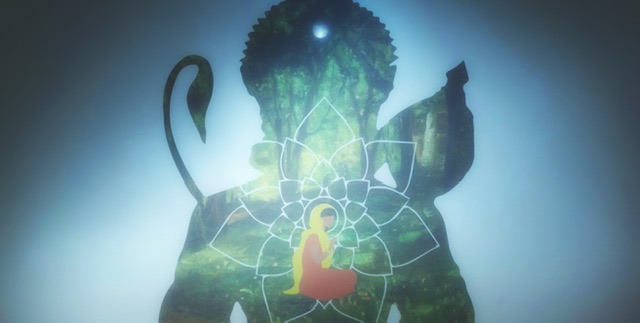Fire, is a magical element and its magic was explored square and wide by the Vedic seers, quite literally. Most of us know of fire as that which gives heat and light, some of us aware of the fires that run our body, very few understand its role in purifying the body and elements, still lesser people know of it as a medium to interact with forces of Creation and hardly anyone actually uses these properties to manifest changes within and around. Dhyan Ashram is one such rarest of rare places where sadhaks practically experience the magic of fire as detailed by vedic rishis, under the guidance of Yogi Ashwini.
Yagyas were a routine practice in vedic times, they are too at Dhyan Ashram, in present times. They are to be understood, not as a ritual, but as a perfect and precise science to invoke and channelize forces of Creation through the medium of fire. There are close to 400 kinds of yagyas detailed in the Shastras towards different ends. Those for fulfilment of desires come under kamya-karmas. Those which are to be performed as a duty by every individual are called nitya-karmas. Those pertaining to an individual and his family are called ghrya-karmas. These are also called smarta-karmas since they belong to the Smritis. Then there are yagyas to be performed for well-being of mankind, these are detailed at length in Shrutis (Vedas) and so are called srauta-karmas. In this article, we will be discussing the last category of yagyas.
The fire meant for srauta-rites is divided into three, and so is also called the tretagni. It comprises of,
Garhpatyagni – This is the agni of the master of the household and it is to be kept alive at all times in a circular kund placed near the western entrance of the mandap. No oblations are made to this fire. The fire for performing rites of ancestors and certain deities is drawn from this fire.
Dakshinagni – Located at the south of the garhapatya, this fire is ignited from the garhapatya in a semicircular kund and used to perform specific rites for the pitris or forefathers. After the rite is performed, the fire is extinguished.
Ahavaniya – This is positioned to the east of the garhapatya, in a square kund. The oblations to deities, including the agnihotra, are made in this fire, which is again made from the garhapatya. The term ‘havan’ comes from the ahavaniya. For elaborate havans, like the Somyagya, the fire from ahavaniya is taken to a yagyashala where rite is to be performed.
The area of the three kunds is the same, irrespective of the shape. The three kunds are not in a single straight line and the dakshinagni kund is placed nearer to the garhapatya kund. Baudhayana Sulba Sutras detail specific formulae and measurements for deriving the dimensions of the kunds, the distance between them and the laying of bricks.
When yagyas are performed in the correct manner, under the guidance of a Guru, the devs and devis manifest in the yagya-agni, there is no smoke in the fire and the results are tangible and apparent. To experience such a yagya, and to learn the science behind it, you may contact Dhyan Ashram.





